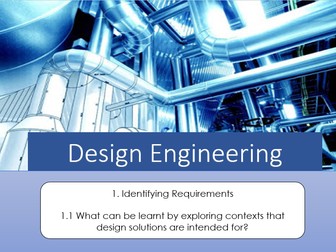Timber Forms and Stock
<p><strong>By the end of this section you should know:</strong><br />
The stock shapes timber comes in<br />
The Standard Stock Size Timber comes in<br />
How to calculate the wastage of timber</p>
<p>18 slides fully editable<br />
Starter activity<br />
Followed by theory regarding timber forms and stock<br />
Example how to calculate wastage of material</p>
<p>3 Possible activities at the end; one being calculation question.</p>
<p>Used with year 10 GCSE to cover the core sections of the Timber content following the pearson edexcel exam board; but would be appropriate for other boards to.</p>
